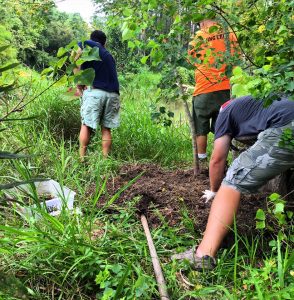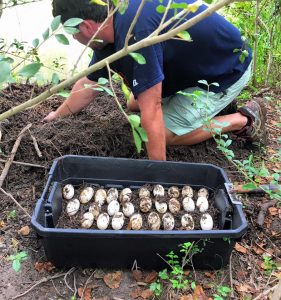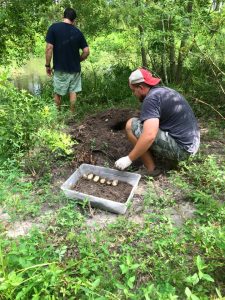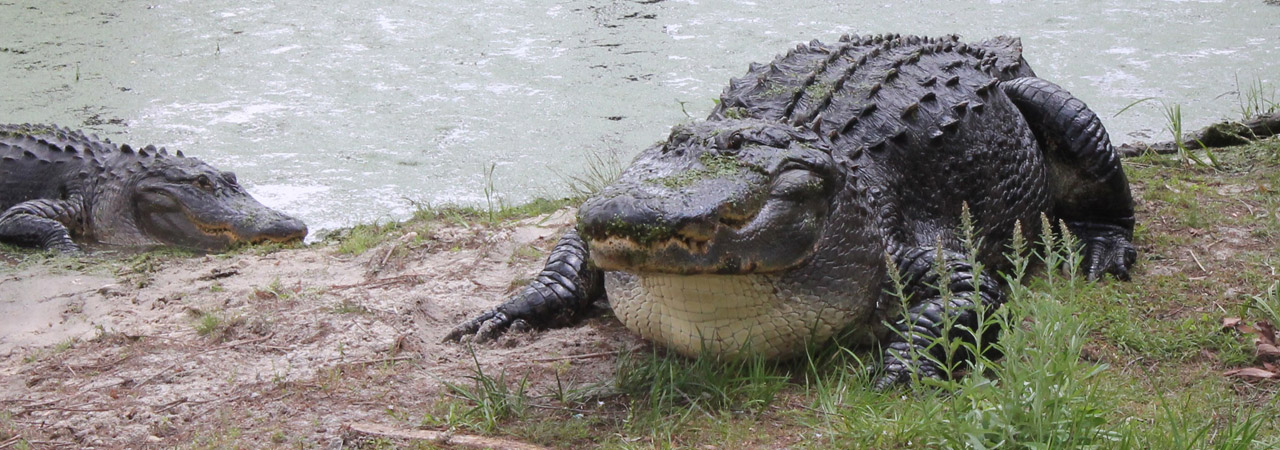Six Things to Know About Harvesting Alligator Eggs
It’s an exciting time right now at Alligator Alley! Our farmers Wes, Joe and Chris have been working hard harvesting eggs. By this fall, we will have some cute new additions to our farm family.
Not familiar with the process? Well, you’ve come to the right place for a crash course in alligator egg harvesting.
1. There’s a season for mating.
Alligators actually mate by mid-April through the end of May. On average, around 35 eggs are laid, and they incubate in their nest for up to 65 days.
2. Alligators make intricate nests.
Female alligators put time and effort into the nests they create for their babies. The nests are usually up to 10 feet in diameter and up to 3 feet high. The mounds are created using mud, plants, sticks, and grass. Even more interesting, the alligators renest in the same spot 70% of the time – in the wild and here at the farm.

3. Temperature is important.
Unlike all other reptiles, the temperature at which the eggs are incubated will determine the gender. When temperatures are below 82.4 degrees Fahrenheit, females result. Males typically incubate at above 91.4 degrees Fahrenheit—anything in between the two results in an even number of males and females.


4. Hatching time.
The eggs begin to hatch around September! The baby alligators have an “egg tooth” to help them escape from their shells. The mama alligator provides protection from predators to this point. After that, the hatchlings are almost fully independent once they get out of their shells, searching for food and evading predators.
5. What is harvesting?
On farms, the staff often assist the mother in the process, which is called “harvesting.” Basically, the farmers will retrieve the eggs from the nest and place them in an incubator. After they hatch, the hatchlings become new additions to the farm!
6. Why harvest?
As reptiles that were once upon a time on the brink of extinction, harvesting has actually helped in conservation efforts. In the wild, alligator eggs are often destroyed by nature or are eaten by predators such as birds. Harvesting ensures that they are safe and can all successfully hatch. It also helps the farm keep up with the alligator population.
Now that you know all about harvesting, come visit us soon when the new babies arrive! We are eagerly awaiting their arrival—and your’s!


